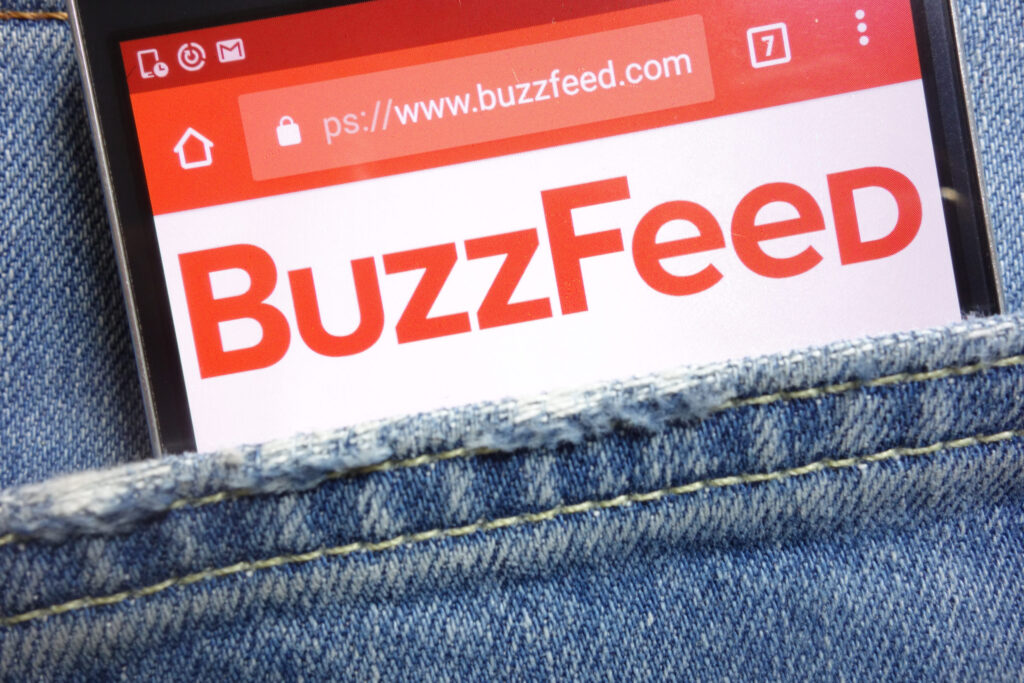BuzzFeed reaps what it sowed in duplicity on labor
March 31, 2022
Across the actions of BuzzFeed, when it comes to labor and investment, BuzzFeed has not just been at cross purposes with itself but has been duplicitous as the company pursued an investment strategy worthy of the Wolf of Wall Street and an editorial policy worthy of Eugene Debs.
And never the twain could meet.
In a 2019 article, BuzzFeed bemoaned the fact that news reporting didn’t pay enough attention to union and labor issues.
BuzzFeed quoted University of Northern Iowa media studies professor Chris Martin as saying that there are “just six full-time labor reporters in the top 25 newspapers across the US, none in network or cable news, none at NPR or PBS, and just a few at digital news organizations and magazines on the left.”
Every day, declared BuzzFeed, should be Labor Day in America, a holiday that most of us think could be replaced by Arbor Day and no one would know the difference.
BuzzFeed also helped support the union drive that made it impossible for companies to hire freelancers — which by law includes some architects, doctors, insurance agents and truck drivers, in addition to writers and other artists — in the state of California because companies are forced to pay them benefits like regular employees.
The law was passed, of course, to help unions.
Then there was this digital celebration from BuzzFeed when Gawker became the first digital media outfit to unionize, written almost as a prospectus for unions.
“And if more American workers seek to join in that radical action, they will find a growing infrastructure of activist groups and resource centers waiting for them,” said BuzzFeed about the Gawker unionization as they urged all of America to unionize.
“They exist outside of the union system, but many of them are supported by the same benefactor: the Services Employees International Union, which has invested its money and people into backing the alt-labor movement,” added BuzzFeed.
But what BuzzFeed didn’t say is that what workers won’t find waiting for them amongst those activists groups and resource centers is a job.
Because ultimately, BuzzFeed has been slashing jobs that aren’t profitable in a quest to make their investors money, which is their duty under the law.
And the union drive that took over the BuzzFeed newsroom was ultimately a drive about trying to stop BuzzFeed from cutting unprofitable jobs in the news divisions as BuzzFeed made more acquisitions and became bigger.
Because ultimately BuzzFeed wanted to capture the digital world by buying up enough of its competitors and complementary companies to dominate the digital market. And when companies make rollup purchases like that, the principal way they can improve profitability is by cutting jobs.
It’s been apparent for a long time, at least those well versed in the ways of Wall Street, that BuzzFeed investors felt the way to probability was by slashing the workforce, even as the company produced union-supporting tripe at every opportunity.
“Employees at BuzzFeed News voted to unionize in early 2019. The vote came weeks after layoffs at the news outlet that helped steer the organization toward profitability,” said the Wall Street Journal last year, as BuzzFeed employees staged a strike to try to prevent the company from going public.
For example, just weeks after buying the HuffPost, BuzzFeed cut 47 workers from HuffPost’s payroll, according to the New York Times.
So the most generous description would be that BuzzFeed has been working at cross purposes for the last several years, on the one hand editorializing about the importance of labor, and on the other hand pursuing a strategy that treats workers as merely expenses in a game that seeks to maximize the benefits of scale as they acquire more companies and chop more workers.
A better word might be to just call them hypocrites; it’s shorter and more to the point.
And so now, the company and its investors face the possibility of not just a strike, but a National Labor Relations Board complaint by the employee’s union and a lawsuit by employees over the company’s recent public offering.
The company is fighting not just for profitability now, but for survival.
On the very last day of 2020, the New York Times pegged BuzzFeed’s valuation at $1.7 billion.
Today, the company’s market capitalization is less than half that at $700 million and the stock is trading near pre-bankruptcy range, a bit over $5.
If BuzzFeed is denied the possibility of being able to control its payroll expenses, it could be very bad for the company.
The best outcome for BuzzFeed now is that they get to fire the whole newsroom staff in defiance of the union.
